The 2023 Toyota Prius is a Hot Hybrid for a Changing World
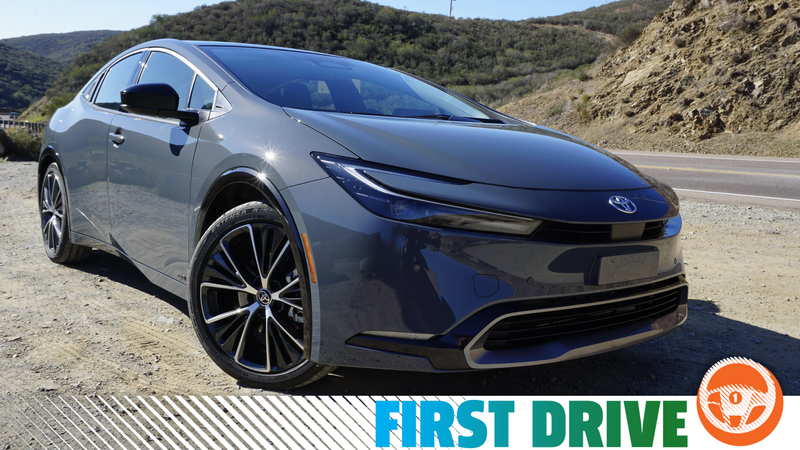
As electric vehicles continue to make their way deeper into the automotive landscape, it’s easy to forget about hybrids. They’re sort of like the middle child of the car world – stuck somewhere between the internal combustion past and EV future. Well, the fifth-generation Toyota Prius wants you to know that hybrids are still here, still relevant, and better than ever. The 2023 Prius comes with a new look, a lot more power, a premium feel, and sportier driving characteristics. It’s also the most powerful and, depending how you spec it, the most fuel-efficient Prius ever. It’s enough to pull the Prius – a car that has been on sale in the U.S. since 2001 – back into relevancy. Here’s how Toyota did it.
Full Disclosure: Toyota flew me out to Del Mar, California, put me up in a swank hotel for two nights and fed me copious amounts of food during my stay, all so I could drive the new 2023 Prius.
Read more
2023 Toyota Prius: More Powerful and More Economical
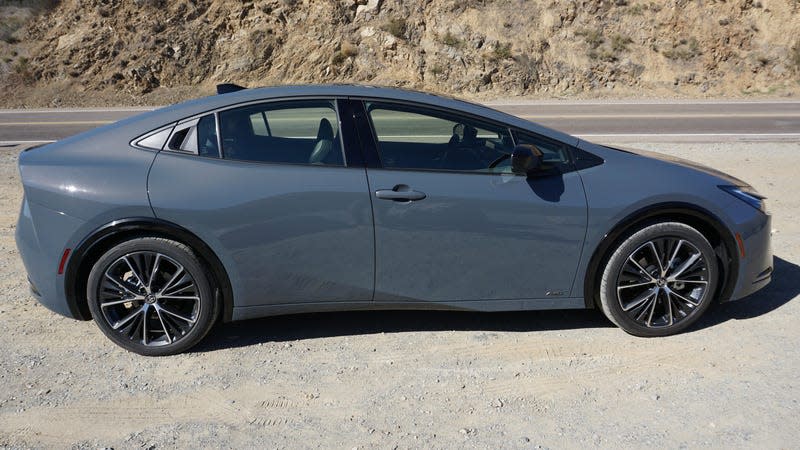
Toyota is going down the “have your cake and eat it too” route with the fifth-generation Prius. Toyota says the new car – provided you opt for the base “LE” trim with smaller wheels – can achieve 57 mpg combined, thanks in part to a slippery 0.27 coefficient of drag. (For reference, the best you could do with a base-model 2022 Prius was 52 mpg combined, per the EPA; even the Prius Eco maxed out at 56 mpg combined.) Of course, overall fuel economy drops as you add on the options or check the box for all-wheel drive: Top-of-the-line XLE and Limited AWD models get a Toyota-estimated 49 mpg combined, and official EPA numbers have not yet been finalized.
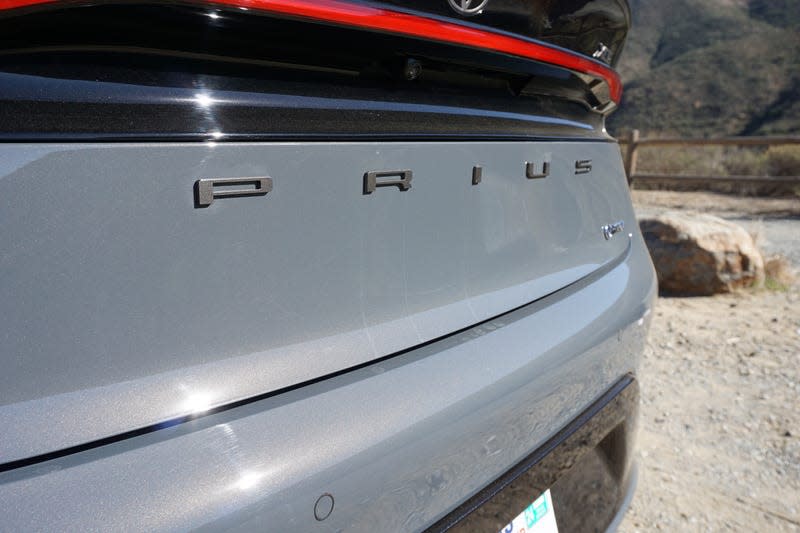
Despite the fuel efficiency improvement, there’s no penalty in performance. In fact, one of the biggest upgrades with the new Prius is a bump in power. The hybrid powertrain pumps out a total of 194 hp in front-wheel drive guise, or 196 with all-wheel drive. The Atkinson-cycle 2.0-liter four-cylinder engine (up from 1.8 liters) puts out 150 horsepower all by itself. The new and improved powerplant operates almost silently in the background. If you turn the radio up just a tad, you might think this was a completely electric car.
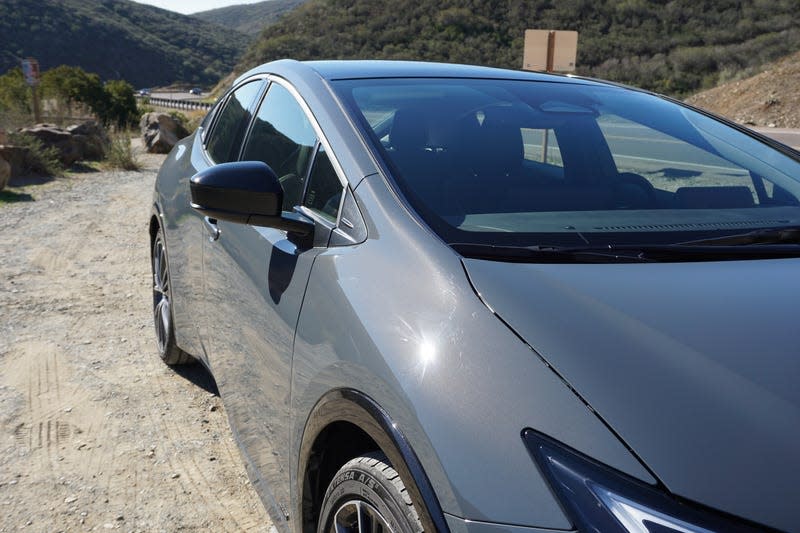
The engine teams up with a 110-hp electric motor system (up more than 40 hp over the fourth-generation car) driving the front axle; all-wheel drive models get a second electric motor at the rear. All of that adds up to enough power to move the little liftback from zero to 60 in a manufacturer-estimated 7 seconds flat in all-wheel drive trim. For reference, the previous car sprinted to 60 in a leisurely 9.8 seconds, according to Toyota.
2023 Toyota Prius: Interior and Tech
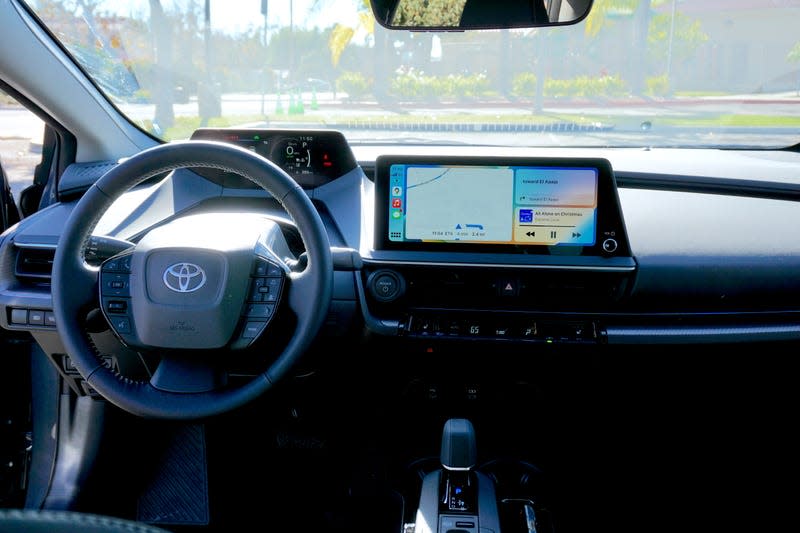
If you’ve spent any time inside a previous-generation Prius, you know it’s a utilitarian design that’s not particularly comfy or luxurious. Like everything else with the 2023 Prius, Toyota changed that too.
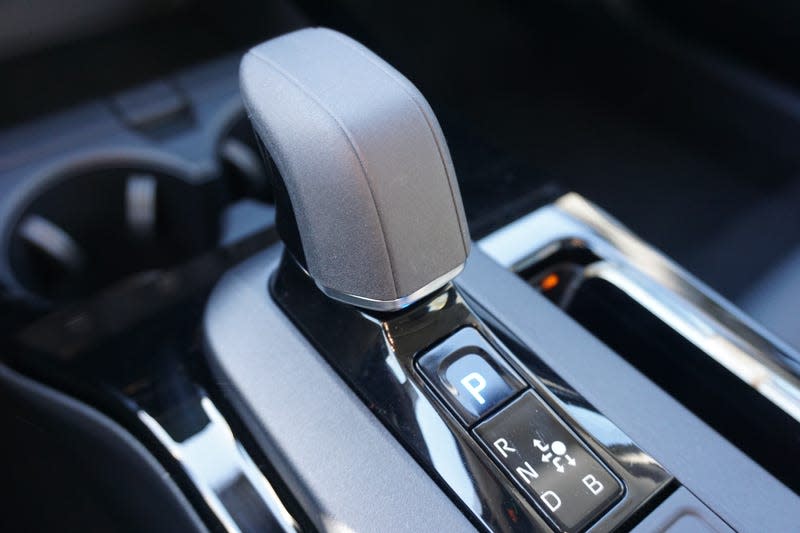
In keeping with tradition, the 2023 Prius has a very open, airy feel. Toyota did away with the tall, narrow center-stack screen, replacing it with a larger, more horizontal unit. The interior of the new Prius feels almost Lexus-like. It’s plush, yet very well thought out. The seats are lovely, providing plenty of support for my ruined back and achy knees. Every button and knob is exactly where you’d expect it to be – save for the volume knob, which is at the passenger’s side of the 12.3-inch center screen and can be a bit of a reach for the driver. One more curiosity is the placement of the instrument cluster. Unlike previous Priuses, the speedometer has moved from the center of the dash to right in front of the driver, but pushed fairly far forward, almost like a heads-up display. During my testing I noticed that the steering wheel sometimes blocks large chunks of the instrument display, so before you buy one of these, really sit in it to make sure the sight lines work for you.
The infotainment system is just about as standard as can be, but very easy to use. Menus and features are never more than a few taps away, and the positioning of the screen never takes your eyes too far off the road. Over-the-air updates should keep it feeling newer for longer.

While the front seat occupants may feel a sense of airiness, the same cannot be said for back-seat passengers. At 6’1” I could not comfortably fit in the back of the car unless I removed my head. For short journeys, I’m sure it would be fine, but I would not want to spend any sort of extended period back there. The shape of the new Prius’s roof works well visually, but comes at the expense of rear headroom. The company says rear headroom now sits at 36.4 inches. That’s down a full inch from the 2022 model, and is not a very Toyota move.

 Yahoo Autos
Yahoo Autos 